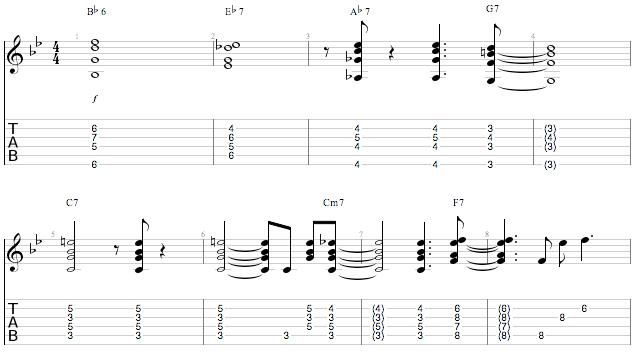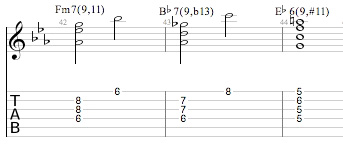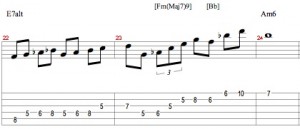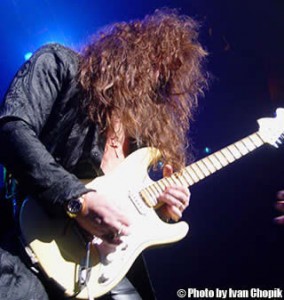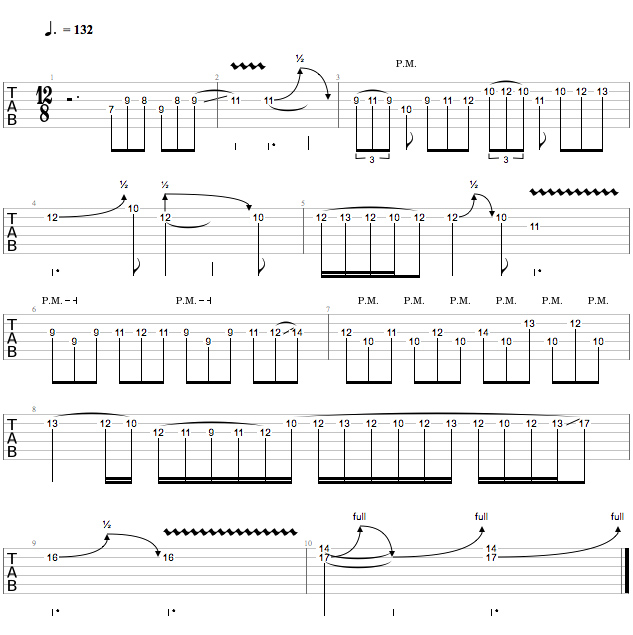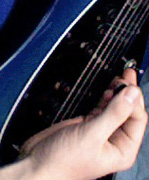In my last lesson I bombarded you with tons of thick, gooey tension-filled voicings, and explained how they work. As we all know, with new knowledge comes new responsibility. When and how should these voicings be used? That’s an excellent question, so I’ll give you a couple of suggestions and show you how using tensions in your chord voicings can spice up some great jazz standards.
Tensions are an important part of what makes Jazz harmony so rich and pretty. In example 1A you can hear how 7th chords without any tensions sound in the timeless ‘There Is No Greater Love‘:
Example 1A:
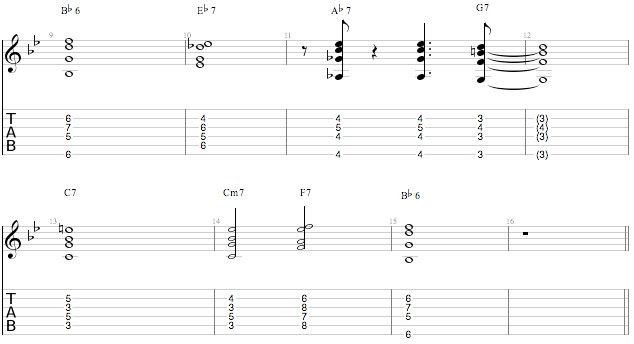

In 1B you can hear these same chords with tensions:
Example 1B:
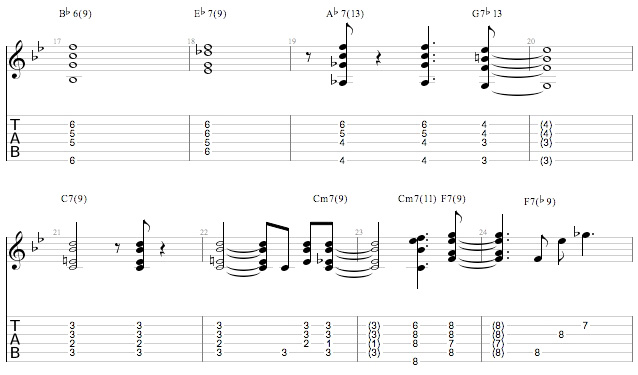
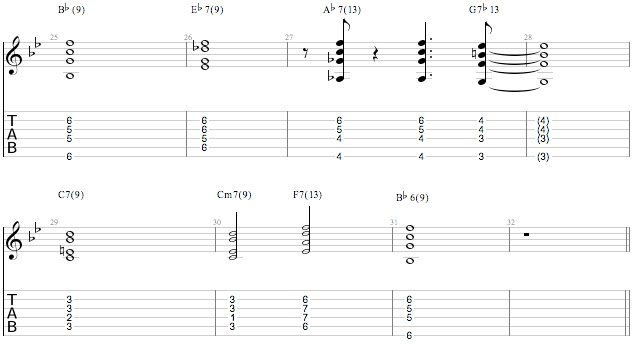
Many of these voicings follow two general rules : 1) The root is in the bottom of the voicing, the guide tones are in the middle, and the tensions are on top:
Example 2A:
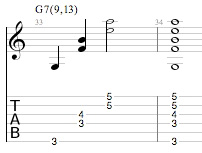
2) Tensions 9, b9, #9 replace the root, and 11, #11, 13, b13 replace the 5th. Keep in mind these are general rules, which means that they can and should be broken at times:
Example 2B:
 You can use these voicings in solos too, as well as use the tensions in your single note lines! Playing chords in your solo is especially effective when playing in a trio with just a bassist and drummer. Here are a couple ii-V-I licks using it. From here on out, all the voicings are rootless, as if you were playing with a bassist, which frees the fingers up to do more:
You can use these voicings in solos too, as well as use the tensions in your single note lines! Playing chords in your solo is especially effective when playing in a trio with just a bassist and drummer. Here are a couple ii-V-I licks using it. From here on out, all the voicings are rootless, as if you were playing with a bassist, which frees the fingers up to do more:
Example 3A:
Example 3B:

Similarly, you can play the melody and chords of a tune together by using voicings with the melody note on the top. Here’s how you can use it on the tune, ‘Ladybird‘:
Example 4:
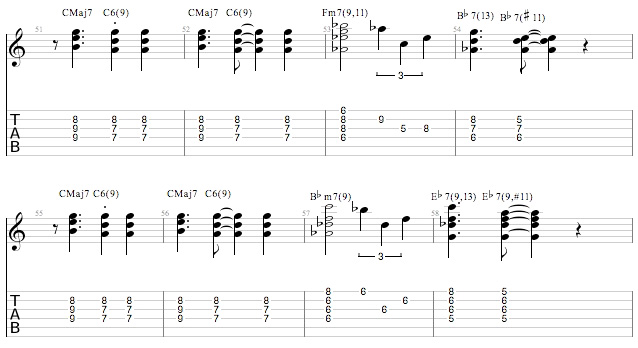
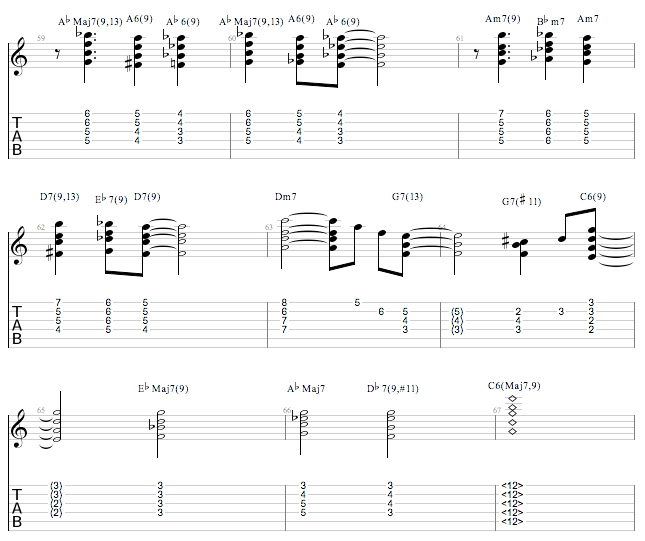
Tensions are a critical part of the Jazz sound! Use them wisely and they will serve you well.



